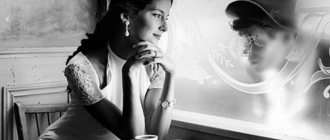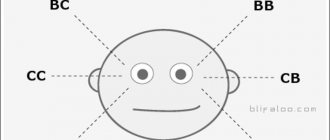At the beginning of the 20th century, Roberto Assagioli decided to combine all existing knowledge in the field of psychology. He wanted to put together Freud's theory and all the concepts that came out of it. Based on the principle of unification, the name was given - psychosynthesis. Assagioli wanted to combine all the concepts in order to create such a powerful scientific construct that could explain completely different phenomena and processes, could teach different methods and techniques.
Assagioli even described the personality structure by synthesizing existing ideas from different psychological schools. He identified the lower, middle, higher and collective unconscious, the field of consciousness, the conscious and higher “I”. Thus, according to psychosynthesis, personality consists of 7 mental parts. Roberto Assagioli also described various techniques and methods of human development and self-realization.
In this article:
What we are all made ofManagement of subpersonalitiesMethods of psychosynthesisIdentification
What are we all made of?
Photo by Rostyslav Savchyn on Unsplash
Any serious psychological theory includes a description of the personality structure, that is, what a person consists of. Without this, no idea can become a scientific concept. Roberto Assagioli was a student of Freud and relied more on his psychoanalytic model. He described seven separate structures of the psyche.
- The lower unconscious. This includes the deepest processes affecting the human body and behavior. For example, instincts, dreams and nightmares, strong early complexes and fantasies.
- Middle unconscious (or preconscious). This area stores all the skills and knowledge of a person, everything that his mind processes. This sphere is closely connected with consciousness and they pass into each other.
- Higher unconscious (super unconscious). High and wonderful aspirations are born here, such as inspiration, intuition, heroism and altruism, as well as spiritual energy.
- Consciousness. This is exactly what a person is aware of in the moment here and now, all his thoughts, sensations, feelings, experiences.
- Conscious Self, or Ego. This is a person’s inner experience of himself. This is the central point in the entire field of consciousness, where a person’s attention is directed.
- Higher Self. The deepest part of self-awareness. The conscious self shuts down when a person is asleep or in a coma. The Higher Self does not disappear, it is the true essence of a person. It is what helps a person return to consciousness after sleep or anesthesia.
Subpersonalities in a healthy person
- Collective unconscious. This is everything that Jung described. This is an area that stores the knowledge of a person’s ancestors, his family, as well as his people and culture. A person is born into a certain common field and absorbs everything that was experienced by his relatives.
The main tasks of a person, according to Assagioli, are achieving harmony with oneself and people, as well as comprehending one’s own higher self, self-knowledge. Psychosynthesis helps to combat those that disturb the internal or external balance of a person’s life.
Behavioral (behavioral) psychotherapy
According to this psychotherapy, patients are treated in several stages.
- Behavioral analysis. Perhaps the longest stage. At this stage, the psychotherapist carefully approaches the creation of an optimal therapy regimen and develops a treatment plan.
- A complete serious treatment plan is developed at the second stage. When the patient's problems are identified, their correction becomes the most important task of the psychologist.
- At the last stage, the patient develops behavioral skills.
As a result of behavioral psychotherapy, the doctor gradually teaches the patient the necessary behavioral skills that can help him exist in society. Of particular importance is the patient’s desire for development, his motivation and focus on results.
Managing subpersonalities
According to psychosynthesis, each person has many subpersonalities. By working with them, you can get closer to knowing your true, higher self. There can be a lot of such subpersonalities. They appear when you associate yourself with some state. For example, you say: “I’m tired.” There is fatigue in the body, these are your sensations, but you seem to merge with them and the subpersonality of you who is tired appears. She behaves in a certain way, it's like a mask or a role.
While you are in your subpersonality, it guides your behavior and even your script. Psychosynthesis proposes to fight subpersonalities and take one’s behavior under the control of the conscious self. If you feel that there is you, but there is a feeling of fatigue, that fatigue is not the whole of you, but only one of different sensations, you leave the role of this subpersonality. There is you, your I, and separately the feeling of fatigue.
Or, for example, you feel anxious. When it takes hold of you, it is very difficult to deal with. Sometimes people are afraid of anxiety itself, so it takes over the mind and controls behavior. Or they are afraid of pain, any kind - emotional or physical. Very often, disidentification with the subpersonality helps restore balance.
Remember, you are not anxiety. And you are not pain. You are you. And you have a little anxiety, a little fear, joy, anger, hunger, fatigue and so on. And also, even when you feel severe pain and it seems to you that you are drowning in it, in fact the pain is not all of you. There may be a lot of it, but besides it there is always something else. There are sensations in the body, there are feelings for other people, responsibilities and desires, thoughts and dreams.
Image by Gerd Altmann from Pixabay
Very often a person finds himself in difficult situations due to a conflict between subpersonalities. There are a lot of them and each one requires space. The desires of different subpersonalities create contradictions and tension. Sometimes a person cannot even immediately realize them. Only when he gets sick, for example, can he begin to think that something is wrong in his life. For example, one subpersonality is angry and wants to rest, give up everything. And the other subpersonality is a responsible mother or a professional, he wants to be good, useful and achieve a lot.
Such a contradiction tears a person apart from the inside. You can “reconcile” subpersonalities by separating yourself, your states and true desires and priorities. You can choose what kind of person you want to be, what you strive for.
Control over various elements of personality
Once we have identified all these elements, we must master them and gain control over them. The most effective method for achieving this goal is the disidentification method. It is based on a fundamental psychological principle which can be stated as follows:
We are dominated by everything with which we identify ourselves.
We can dominate and control everything with which we have identified ourselves.
In this principle lies the secret of our freedom and our enslavement. Every time we identify ourselves with weakness, guilt, fear, or any of our other emotions or urges, we limit and constrain ourselves. Every time we say “I'm depressed” or “I'm irritated,” we become more depressed or angry. We impose this limitation on ourselves; we put ourselves in chains. But if, under the same circumstances, we say that “a wave of despondency is trying to overwhelm me” or “a flash of anger is trying to take over me,” the situation will change dramatically. Now there will be two opposing forces involved: on the one hand, our alert self, and on the other, despondency or anger. And the vigilant self will not tolerate their intrusion: it can critically and impartially examine the impulses of despondency or anger: it can see their causes, foresee their undesirable consequences and recognize their groundlessness. Often this is enough to withstand the advance of such forces and win the battle.
But even if these forces become stronger for a time, if the conscious personality is initially overwhelmed by their onslaught, the watchful self will never be completely defeated. It can retreat to the inner fortress and, waiting for a favorable moment, prepare there for a counter-offensive. It may lose a number of battles, but unless it raises its hands and surrenders, the final outcome of the matter is certain: it will win in the end.
Further, instead of repeatedly repelling attacks coming from the unconscious, we can use a more thorough and decisive method: we can address the underlying causes of these attacks and uproot the problem from the roots. This procedure can be divided into two phases:
a. Decomposition of harmful complexes or mental images into elements.
b. Management of released energies and their use.
Psychoanalysis has shown that the power of these complexes and mental images lies mainly in the fact that we are not aware of them. Often after they are identified, understood and broken down into their component elements, they cease to bother us. In any case, after this we can defend ourselves against them much more effectively. To decompose into elements, it is necessary to use the methods of “objectification” and “critical analysis”
and "discrimination"
. In other words, we should observe them coldly and dispassionately - as if they were simply external natural phenomena. It is necessary to establish a “psychological distance” between yourself and them and, keeping these complexes and mental images, so to speak, at arm’s length, calmly study where they came from, what their nature is and how stupid they are. This does not mean that the energy inherent in their manifestations should be suppressed or contained; you just need to manage it, transferring it into a constructive direction.
As you know, an overly critical and analytical attitude towards one’s feelings and emotions can fetter and even kill them. This ability of critical attitude, often used to the detriment of our higher feelings and creative possibilities, should be used to free ourselves from unwanted impulses and tendencies. However, critical analysis is sometimes insufficient. Some stable tendencies, some vital elements of our being stubbornly continue to exist, no matter how much we condemn and deny them. This is especially true for sexual and aggressive impulses. Disconnecting from one or another complex or deviating from their previous channel, they lead us into a state of excitement and anxiety and can find a new, but equally undesirable way out.
Therefore, such forces should not be left to chance, they should be directed towards some harmless or, even better, constructive goals: various kinds of creative activity, personality restructuring, promoting psychosynthesis. But in order for this to be possible, we must start from the center; we must affirm and empower the unifying and guiding Principle of our lives
Methods of psychosynthesis
In psychosynthesis, the work begins with the lower unconscious and continues in a hierarchical sequence. First, the earliest, childhood complexes are “revealed.” These are the most severe injuries in the first year of life. What happens to a person in the pre-speech period greatly influences his fate. After all, it is difficult to unearth and change what is learned at the level of sensations and not thoughts. The baby has no speech yet.
After working with complexes and deep instincts, you can move on to the middle and higher unconscious. This rich field can reveal to you your resources, abilities and talents that you did not know. You can find out about your purpose, true calling. This is a great creative principle in a person.
Photo by Daisy Anderson: Pexels
Willpower development techniques
Along with psychosynthesis, the scientist practiced so-called positive psychology. This was facilitated by work with soldiers returning after the end of the First World War. The main focus of this work was developing the will for positive change. A book, “An Act of Will,” will be written on this topic, but it will be published after Assagioli’s death in 1974. It must be said that he experienced the methods of will training himself. Having Jewish roots, the scientist was persecuted by the Mussolini regime and was even imprisoned. And in this difficult time, he trained his will so as not to despair and continue working.
Before you begin exercises to develop your will, you need to stimulate and emotionally support your desire. To do this, do the preparatory exercises:
- Imagine all the unpleasant moments that happened to you due to lack of will. Think about what could happen because of this in the future. Make a list. Feel the negative emotions associated with this.
- Now it's the other way around. What will a developed will give you, what can you achieve, what feelings does it evoke? Write it down.
- Imagine how, having a strong will, you achieve all your goals, how you realize your plans, how successful you are.
Exercises to develop willpower
- Wills in everyday life. Maintain a sleep-wake, work-rest schedule, monitor your emotions and do not react negatively. Remember the rule: I control my emotions, not the other way around.
- Physical exercise. After waking up, find 10 minutes for basic gymnastics, take regular walks in the fresh air in any weather, don’t look for excuses. You should not burden yourself with intense training, especially if you are not ready for it. Exercises should develop patience, calmness, and dexterity.
Comments on the exercises
In order for your enthusiasm not to fade, and for the exercises to develop your will to achieve your goal, you don’t need to bring everything to the point of pedantry or do everything at once. Start small and celebrate your success with daily entries. Treat it like a game. This will not affect your effectiveness, but will only reduce the resistance of the unconscious and bring you closer to victory over yourself.
Disidentification
Just as with subpersonalities, identification works with everything that controls a person’s consciousness. This is the basic principle of psychosynthesis - to free a person from everything that prevents him from revealing his higher self. Any process, complex, thoughts, feelings can capture consciousness and control behavior. A person can always separate himself from the process. It is this inner core that you need to rely on and make a choice.
A person can choose the path of development, choose how to react and live. And he can become the person he wants. The main thing is not to deviate from the right path. A person loses himself if he identifies himself only with the body, or only with the intellect. Or chooses only social roles. Personality is always broader.
By synthesizing yourself, dividing yourself into different parts, you can study all your strengths and weaknesses. Those subpersonalities that provide power, energy, resource, you can lead, give them more space. But you are always the main one - your higher self.
Psychosynthesis is a painstaking study of oneself. By removing roles, masks and attitudes, like husks, layer by layer, you will reach the depths of your consciousness. On this path, you will reveal all your best qualities and strategies, cope with your disadvantages and cover your weaknesses. By getting to know oneself, with the help of psychosynthesis, a person gains integrity and harmony.
Books
Assagioli wrote few books: “Psychosynthesis”, “Act of the Will”, “Typology of Psychosynthesis”, “Transpersonal Development”, “On the Spiritual Crisis”; but more than a hundred articles have been published in scientific journals. He did not like to spend time on academic work, but preferred consulting patients and teaching.
He was not only a famous scientist, but also an inquisitive person. Until his death, he did not stop in self-education and research. Assagioli was modest and did not achieve worldwide fame. But his teachings still live today and are actively used in psychology and psychotherapy, increasingly supplemented by new research.
“Autogenic training – prevention of neuroses”
In recent years, autogenic training (AT) has been successfully used not only for the treatment of neuroses, but also for angina pectoris, psychophysiological rehabilitation of post-infarction patients, vegetative-vascular dystonia, the initial stage of hypertension, neurodermatitis and other diseases. AT helps reduce emotional stress, feelings of anxiety and discomfort, has a normalizing effect on the state of basic physiological functions and the regulation of metabolic processes in the body. At the same time, sleep is normalized, mood improves, and the entire person’s personality is activated.
It is best to do autogenic training while sitting or lying down in a quiet and calm environment. The first stage of AT includes five exercises.
- Causing a feeling of heaviness.
- Inducing a feeling of warmth.
- Regulation of cardiac rhythm.
- Regulation of breathing.
- Effect on abdominal organs.
- Effect on the vessels of the head.
All exercises are performed with eyes closed, self-hypnosis formulas are repeated only while exhaling. After performing the exercises, it is recommended to sit quietly for one minute and only then remove yourself from the state of autogenic immersion, saying the formula: “Bend your arms, take a deep breath, open your eyes as you exhale.” About 2 weeks are allotted for mastering each exercise, and 3–4 months for the entire course.
Cognitive psychotherapy
Since a person’s problems are the result of his incorrect perception of what is happening, inferences and automatic thoughts, the validity of which he does not even think about, the methods of cognitive psychotherapy are:
- Imagination.
- Fighting negative thoughts.
- Secondary experience of childhood traumatic situations.
- Finding alternative strategies for perceiving the problem.
Much depends on the emotional experience that a person has gone through. Cognitive therapy helps with forgetting or learning new things. Thus, each client is invited to transform old patterns of behavior and develop new ones. Here, not only a theoretical approach is used, when a person studies the situation, but also a behavioral one, when the practice of performing new actions is encouraged.
Bibliotherapy
An important indicator for assessing the effectiveness of bibliotherapy is the patient’s interest in reading. If it decreases, one can judge the deterioration of health.
There are different typologies of effects and functions of the therapeutic method:
- Information functions. Reading provides information and increases knowledge while reducing fear of the unknown. This function is inherent in scientific literature.
- Educational function. Reading brings perspectives and opinions that enhance education.
- "Mirror" function. The reader compares the author's views with his own views, changing his own opinion based on this comparison.
- Identification functions. The reader finds an example or identifies with a character.
- Cleansing function. When reading a book, psychological cleansing (catharsis) can occur. To achieve this effect, the work must be able to perform this purification and the reader must be willing to experience catharsis while reading.
- Aesthetic function. The book affects the reader aesthetically.
- Relaxation function. Providing relaxation and relaxation.
Personality scheme
All this research and development provides such a mass of material that it is quite possible to try to internally coordinate and synthesize it. If we collect firmly established facts, reliable and well-verified information, as well as sufficiently reasoned explanations, without paying attention to the excesses and theoretical superstructures of various schools, we will obtain a multidimensional concept of human personality; being far from perfection and completeness, this concept seems to us more meaningful and closer to reality than the previous ones.
To illustrate this concept, we will use the diagram below. Of course, this is a schematic and extremely simplified image that can only give a structural, static, almost “anatomical” idea of the structure of our inner world, while its dynamic aspect is more important and significant. However, here, as in any science, the steps must be consistent, and the refinements must be gradual.
When dealing with such a plastic and elusive reality as our mental life, it is important not to lose sight of its main directions and the fundamental differences that exist between them; otherwise, numerous details can obscure the whole picture from us and prevent us from realizing the meaning, purpose and value of its various parts
Subject to these reservations and limitations, the map of our inner world looks like this:











